When you offer a digital product, you should have product documentation to accompany it.
It sounds simple enough, doesn’t it? However, how does one create product documentation that will live up to its intended purpose of being a valuable information resource and guiding every user to success?
The answer is—strategy. More specifically, product documentation strategy.
To create great product documentation, you need a vision and a plan, and that’s what documentation strategy provides.
Let’s learn more about it!
Why Do You Need a Documentation Strategy
Having great product documentation is a significant asset in a highly competitive field like software development.
However, one does not produce top-notch product documentation randomly.
If you want to create a resource like that, you should know exactly what to do and how to do it. In other words, you should have a documentation strategy.
Here’s how data analysis expert Sam Alleva defines it:
A documentation strategy is a plan to develop, publish, and maintain documentation that supports a product, technology, or concept.
So, a detailed plan will get you closer to producing high-quality product documentation.
And that documentation can then result in many benefits.
Let’s examine some of them in this section.
Increased Product Adoption
Great product documentation you can create by having a documentation strategy will show off the full potential of your product.
With a proper strategy, it’s easier to produce documentation containing all the important information about your product, including its features, benefits, and value to the customer.
And when you present your product like that to a customer, you increase the chances that they’ll adopt it.
What do we mean by adopting a product? Here’s Graham Ó Maonaigh, a growth marketing expert, explaining the term:
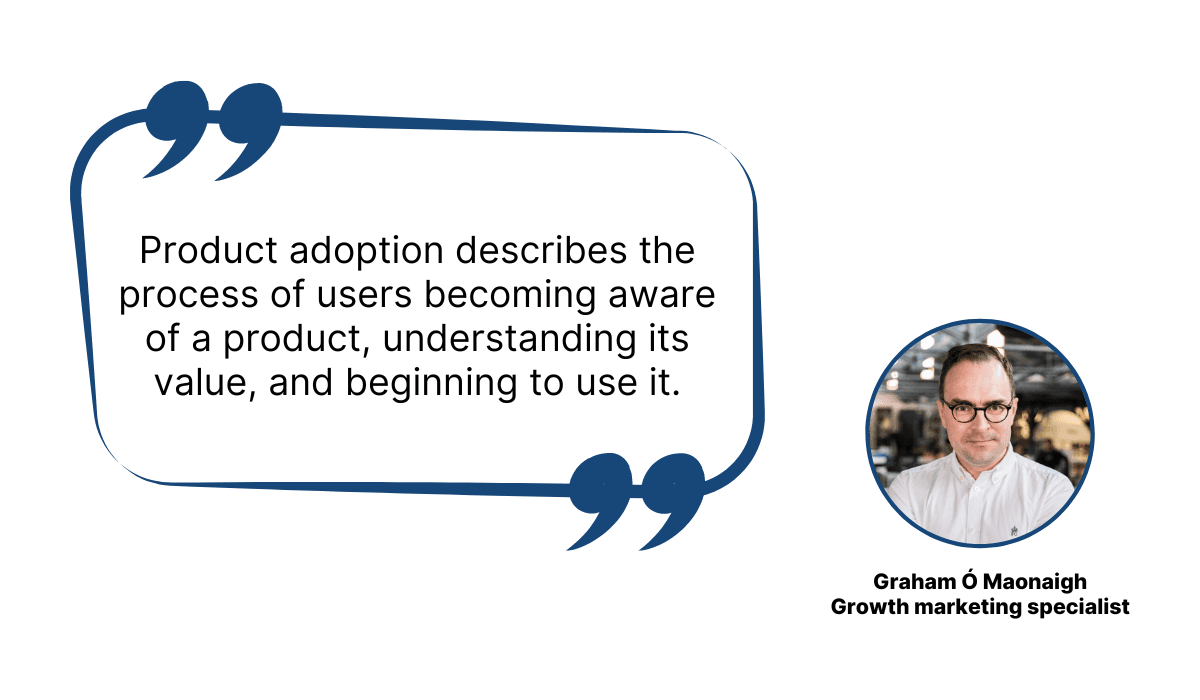
Illustration: Archbee / Data: Intercom
What is especially important is that a successful product adoption process results in customers that are not only satisfied with the product but also loyal to it.
That means they use the product regularly and bring in revenue to your company.
For SaaS companies, that’s crucial. Unlike some other industries, SaaS companies get the vast majority of their revenue from recurring payments.
Essentially, SaaS companies depend on long-term users.
That’s why it is so important to have excellent product documentation that allows customers to discover new uses constantly and encourages them to try out fresh features.
It can keep customers returning to your product repeatedly, making it a part of their everyday routine.
With a product documentation strategy, creating a resource like that becomes much easier.
Higher Customer Satisfaction
Satisfied customers are a cornerstone of any successful business. Simply put, if customers aren’t happy with your product, they’ll leave and look for alternate solutions to their needs.
However, although offering an excellent product is necessary for customer satisfaction, other factors can increase it, too.
You should provide a high-quality customer experience as a whole, and part of that is creating impeccable product documentation with the help of a documentation strategy.
One way that documentation can positively impact customer satisfaction is by providing them with around-the-clock access to support resources.
And that’s something most customers consider very important.
For instance, according to data from Hubspot, 90% of customers want immediate responses to their customer support questions.
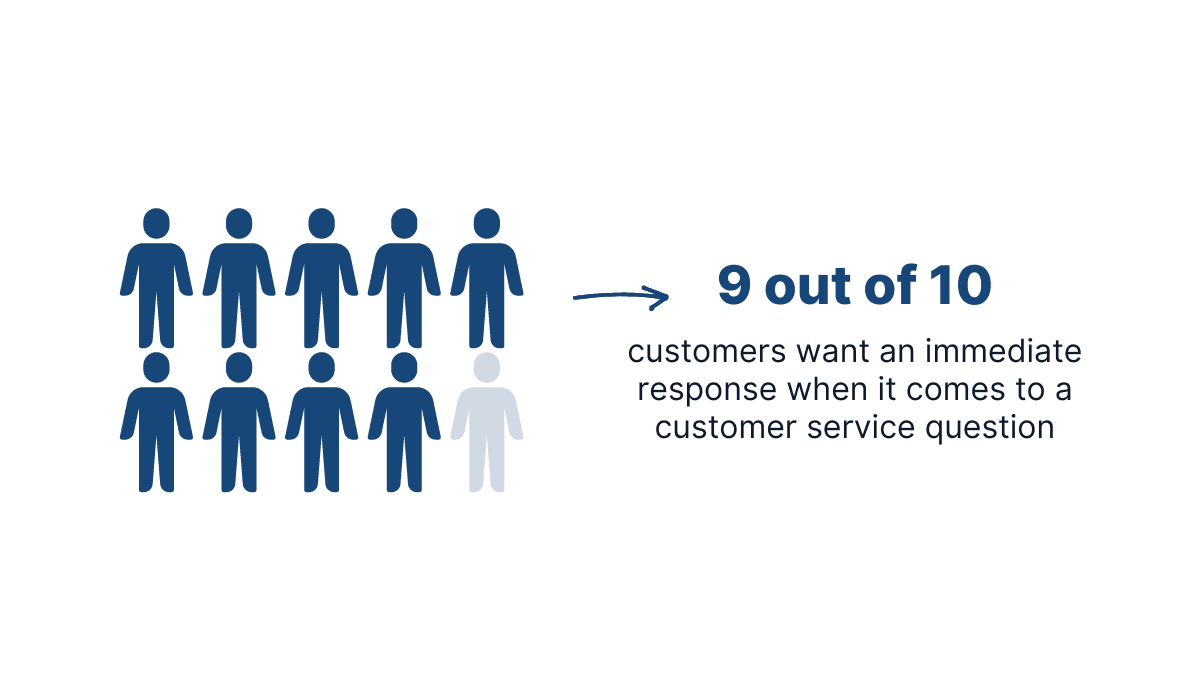
Illustration: Archbee / Data: HubSpot
If they contact customer service agents, that’s not always possible—they could be put on hold or simply spend a lot of time communicating with agents, trying to explain their problem, and waiting for a helpful answer.
On the other hand, if they have high-quality product documentation on hand at all times, the information they need is a few clicks away.
It doesn’t get much more immediate than that.
Also, customers who successfully use your product documentation to find solutions will often express their satisfaction to others.
There is an abundance of social media platforms, forums, and other types of online communities we have today. It is a potentially valuable form of marketing—and it’s free.

Source: Twitter
A tweet like the one above, or a post on Reddit, doesn’t cost you or your company a dime.
On the other hand, they can help form a good reputation for your product documentation, and by extension, for your product.
It’s safe to say that satisfied customers benefit your business.
Easier Employee Onboarding
The top-notch documentation you’ll create with the help of a great documentation strategy will benefit your company’s new employees.
How? By providing them with a smooth onboarding experience.
High-quality product documentation has everything a fresh hire needs to know about the product.
That’s essential because every employee of a SaaS company should be well-acquainted with its software product, regardless of their position in the organization.
That way, employees can solve problems independently without waiting for others to help them.
If they’re in contact with customers, quick and efficient acquisition of product knowledge is particularly important, as it enables the employees to help customers or present the product in the best light.
However, according to Gallup, only 12% of employees think their company does a good job of onboarding.
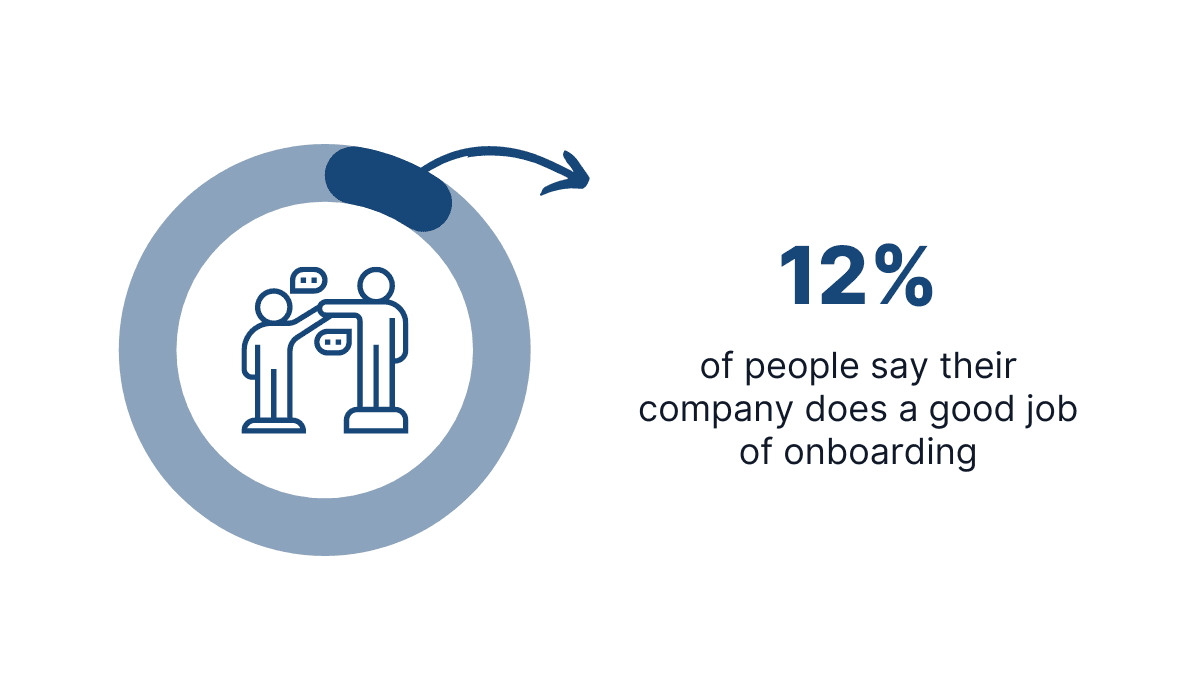
Illustration: Archbee / Data: Gallup
To be in that small percentage of companies, you can provide new employees with all the necessary product documentation.
Building an internal knowledge base is one of the most effective ways to do that.
A good knowledge base can contain tutorials, how-to articles, instructional videos, and other content your employees can use to brush up on their product knowledge.
For instance, Sourcegraph, a code intelligence platform, offers new hires many onboarding resources, including ones that provide more insight into the product.
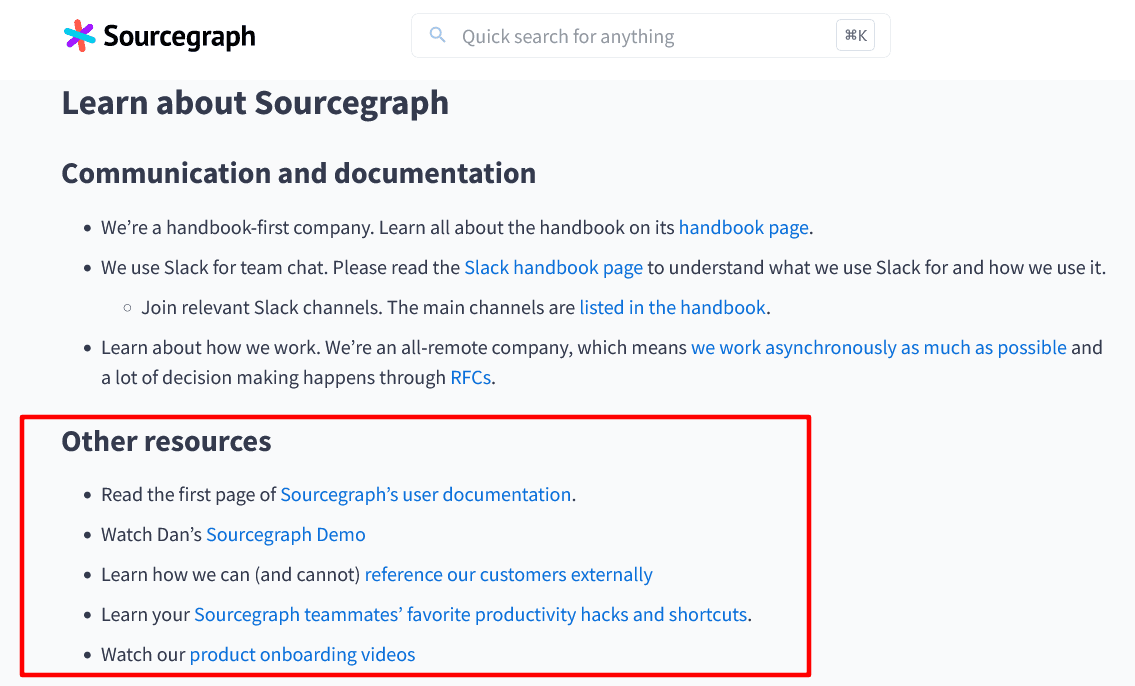
Source: Sourcegraph
Employees can read user documentation, watch a demo or onboarding videos, etc.
All of that can make onboarding easier and provide the necessary product knowledge to help them quickly get up to speed.
A great product documentation strategy that includes a plan for those resources is vital if you want to provide such an experience to your new employees.
What Are the Main Documentation Strategies
When it comes to creating outstanding product documentation, there’s no one-size-fits-all approach.
How you’ll approach such a daunting and challenging task depends on many factors, like the topics you’re covering, the size of your team, the industry you’re working in, etc.—to name just a few.
However, regardless of the strategy you decide to take, it’s very likely that it will be one of the main documentation strategies:
- The firefighter approach
- The in-depth approach
- The breadth-first approach
Let’s break down each of them.
The firefighter approach describes an ad-hoc strategy which involves creating documentation when there’s a pressing need for it.
In other words, when you have a fire to put out, you write documentation that provides your customers with a solution to a particular problem.
Here’s how Swimm’s team defines it:
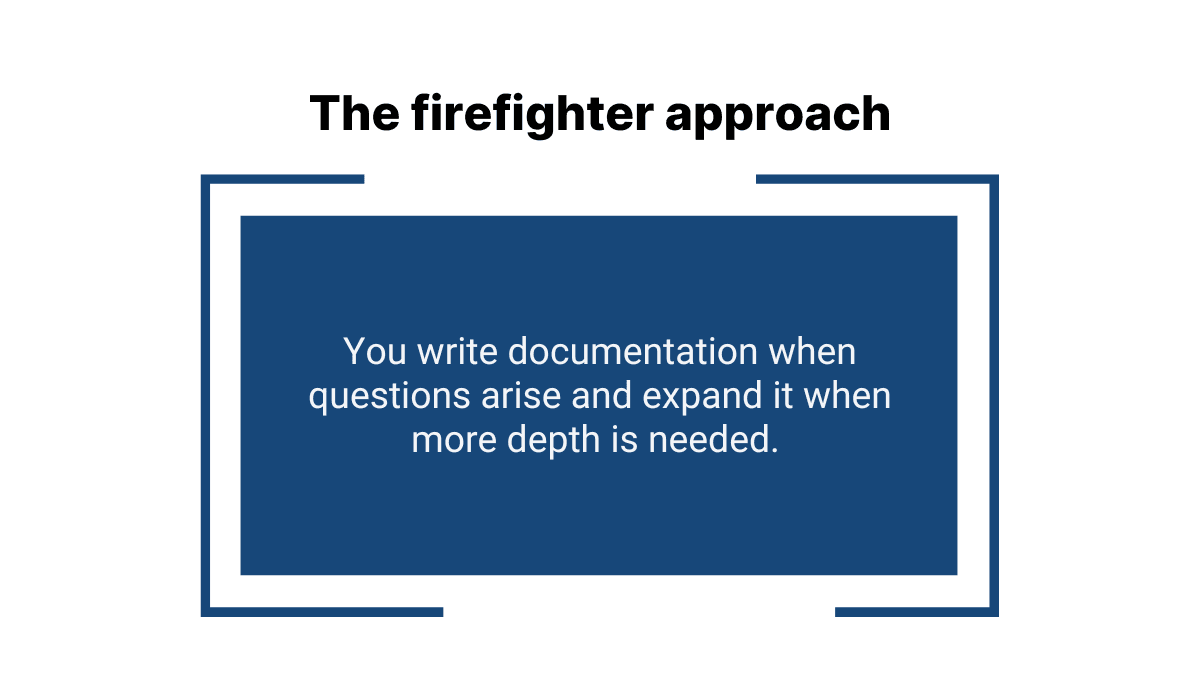
Illustration: Archbee / Data: Swimm
How can you know if there’s a need for documentation?
The easiest way is to keep track of customers’ questions for your customer support team.
If some problems and questions frequently arise, that’s a great indication that documentation that provides answers would be beneficial.
Another frequent documentation strategy is the in-depth approach (sometimes also referred to as the depth-first approach).
As content writer Elmira Abbyasova explains, when you take that approach, you create documentation that goes into great detail.
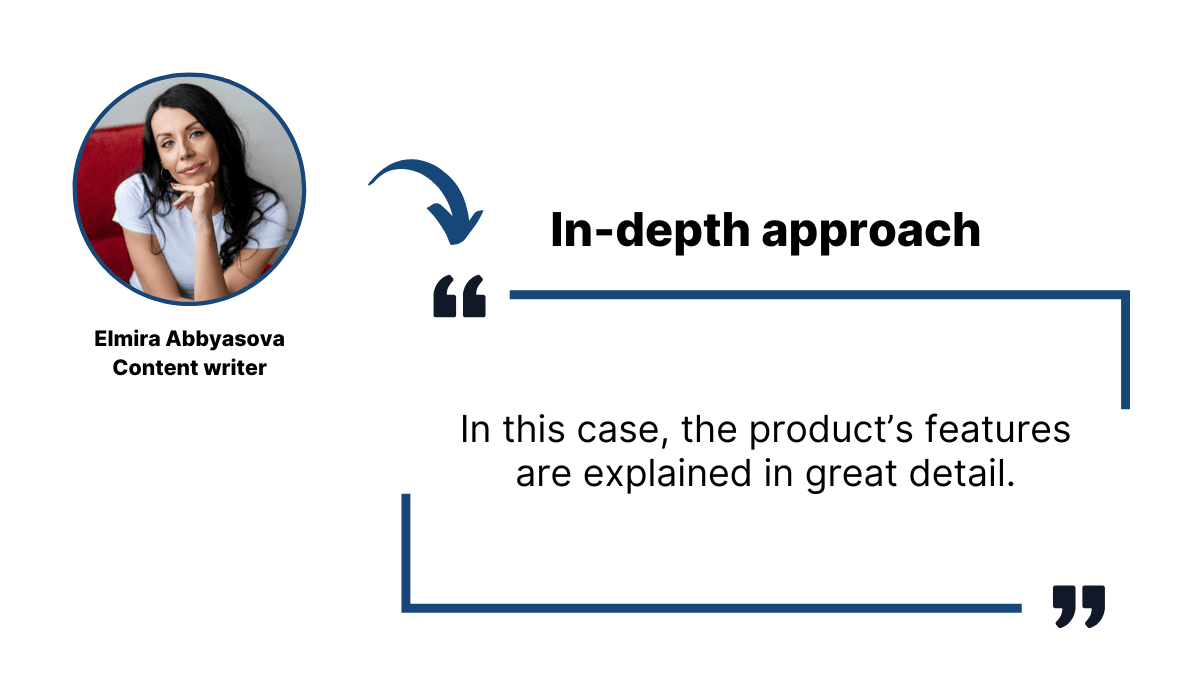
Illustration: Archbee / Data: ClickHelp
The in-depth approach is especially suitable for complex topics.
It might not be necessary to explain how to log into an app in great detail.
However, this approach is very useful for documentation covering products like, for instance, APIs, that require thorough technical knowledge.
Finally, there’s the breadth-first approach.
The main idea of that strategy is to cover many topics and try to assess which are the most important to users.
Unlike the in-depth approach, with this strategy, writers don’t go into detail. They aim to cover the essential topics and add more content when and if the need arises.
For instance, if you have a product that completely lacks any accompanying documents, this approach can be suitable for laying down the foundations of more comprehensive product documentation.
Whatever strategy you choose, you’ll need to take more specific steps in creating it.
Let’s dive deeper into those steps in the following section.
How to Create a Product Documentation Strategy
Now that you know why you need a documentation strategy and the main strategies to employ, it’s time to examine how to create one.
That’s not an easy task, but by implementing a few essential practices, you can build solid foundations and create a strategy that will provide you with all the benefits we’ve mentioned earlier.
Let’s start with the first one—listing the necessary documentation.
List the Documentation You Need
Deciding on which documentation you need for your product is the first step in creating a product documentation strategy.
Your documentation strategy should contain ideas about which resources you should create and provide to your users.
There are many documents you can create, like how-to guides, API documentation, troubleshooting guides, product roadmaps, etc.
Which ones you create will determine your product documentation’s purpose and who will find it helpful.
However, according to Josh Fechter, an authority on technical writing topics, there are two main types of product documentation:
- System documentation
- User documentation
System documentation contains documents aimed at an audience with a high level of technical knowledge, like engineers or developers.
Furthermore, it’s mostly used internally. An example of system documentation is a product requirements document.
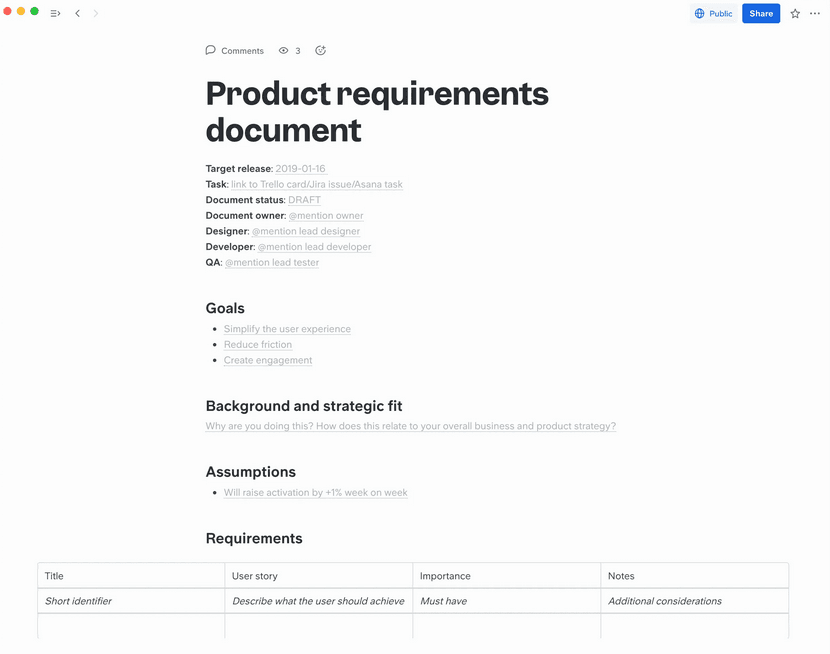
Source: Slite
It defines the product’s goals, features, purpose, target users, etc.
A product requirements document is one of many in the system documentation category.
The classification from Altexsoft below can give you an idea of how many documents there are in that category.
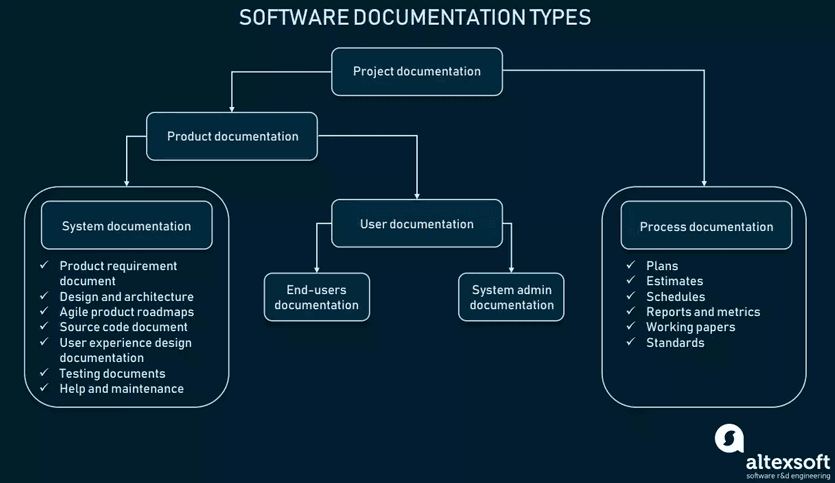
Source: Altexsoft
What all of them have in common is that they aren’t usually released to the public.
For example, a source code document explains how the product’s code works. Test documentation contains the results of testing the product.
A product roadmap is a plan of how the product will evolve and change over time.
You get the picture—those are the documents for internal use, but they still have the underlying purpose of improving the product and, therefore, making the customers happier.
On the other hand, you should also provide documents aimed directly at users—the user documentation.
Those documents primarily explain how the software works. They are also divided into two main categories:
- End-user documentation
- System administrators’ documentation
End-user documents are mostly various types of instructions, like how-to guides, quickstart guides, installation manuals, FAQs, etc.
One example is the documentation in the Slack Help Center.
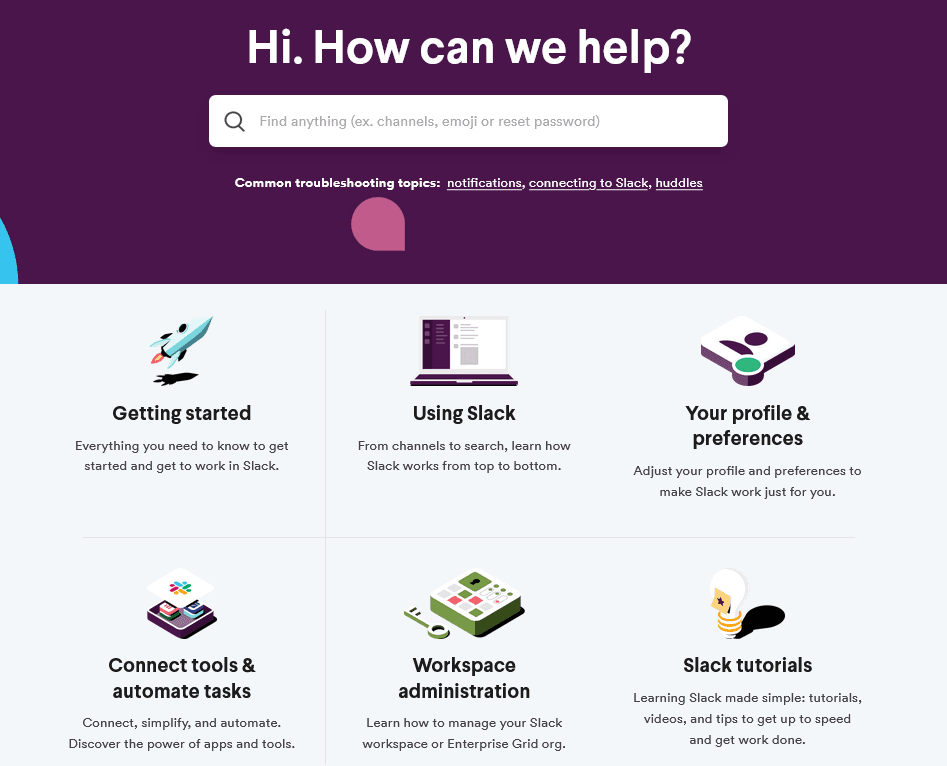
Source: Slack
It’s a resource with documentation about every feature and function of that communication software tool, so customers can learn to use it efficiently.
While end-user documentation is for a broader audience that doesn’t necessarily have prior technical knowledge, system administrators’ documentation helps admins with product maintenance.
For instance, a system admin guide explains how the product works in different environments and systems, as well as provides guidance on how to deal with malfunctions.
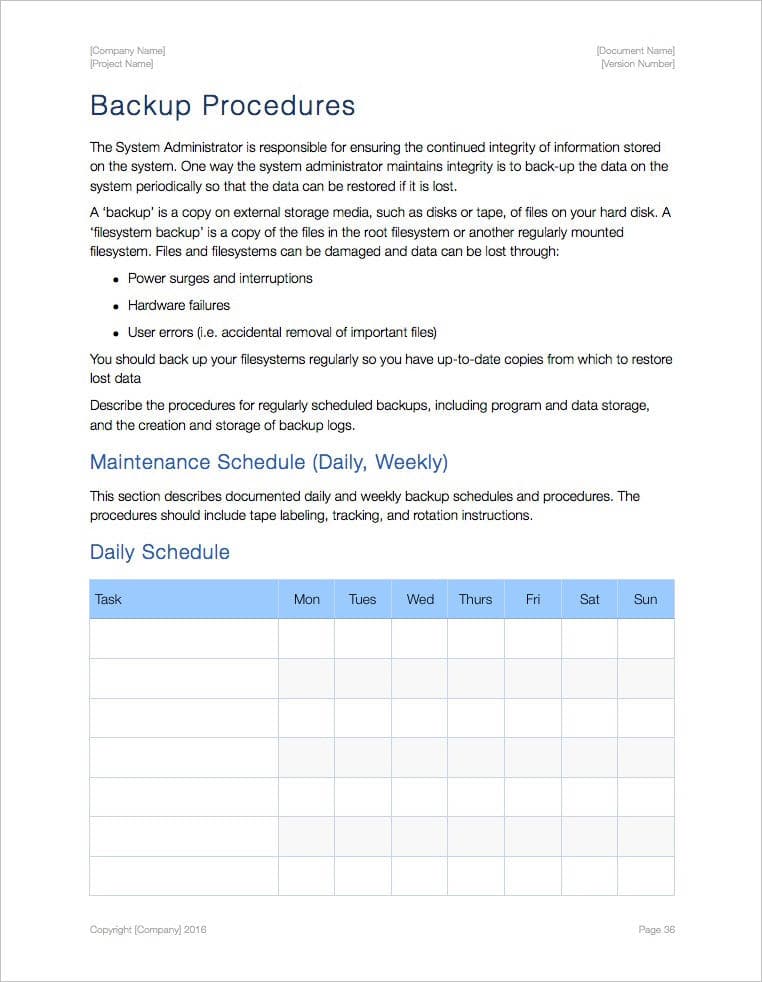
Source: Klariti
As you can see, there are many types of documents that you can create, divided into several categories and subcategories.
That’s why creating a list of the documentation you need is essential for creating a good strategy—you should have a precise plan of what documentation to write depending on your product and needs.
Decide on a Publishing Plan
Once you’ve listed the documentation you need, the next step in the product documentation strategy is to create a publishing plan.
As a part of that plan, you should decide where to publish your documentation, who will be responsible for publishing it, and set deadlines.
Let’s start with the question of where.
For publishing product documentation, you need a great documentation tool like Archbee.
It allows you to publish every type of product documentation in one place, making it convenient for your users.
For instance, ChartHop used Archbee to build their entire help center with documentation for everyday users, as well as for technically-savvy experts.
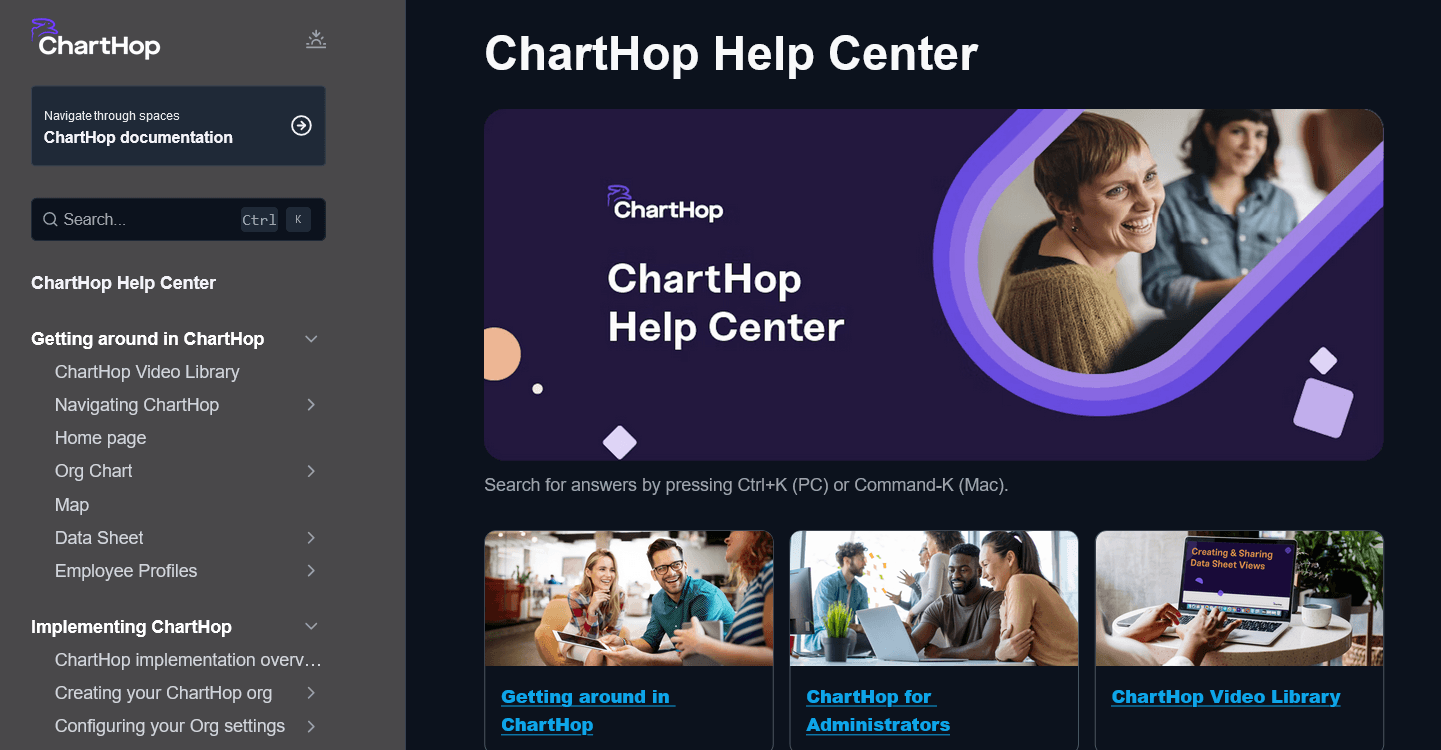
Source: ChartHop
Of course, even a modern and versatile tool like Archbee won’t be enough on its own for the success of your strategy if you don’t decide who’s responsible for publishing the documentation.
It’s best to assign that task to one person in the organization.
That way, you’ll avoid the diffusion of responsibility, a common problem in situations where there are many people but no one knows their role.
Diffusion of responsibility occurs when a duty or task is shared between a group of people instead of only one person.
When you have a place to publish your documentation, and there’s someone responsible for that task, all that is left in order to complete a publishing plan is to set deadlines.
Deadlines add an extra layer of accountability for publishing the documentation.
In addition to that, if you make them public, they also serve as a way to inform your customers about your publishing plan.
For example, Shopify releases new versions of its APIs every three months.
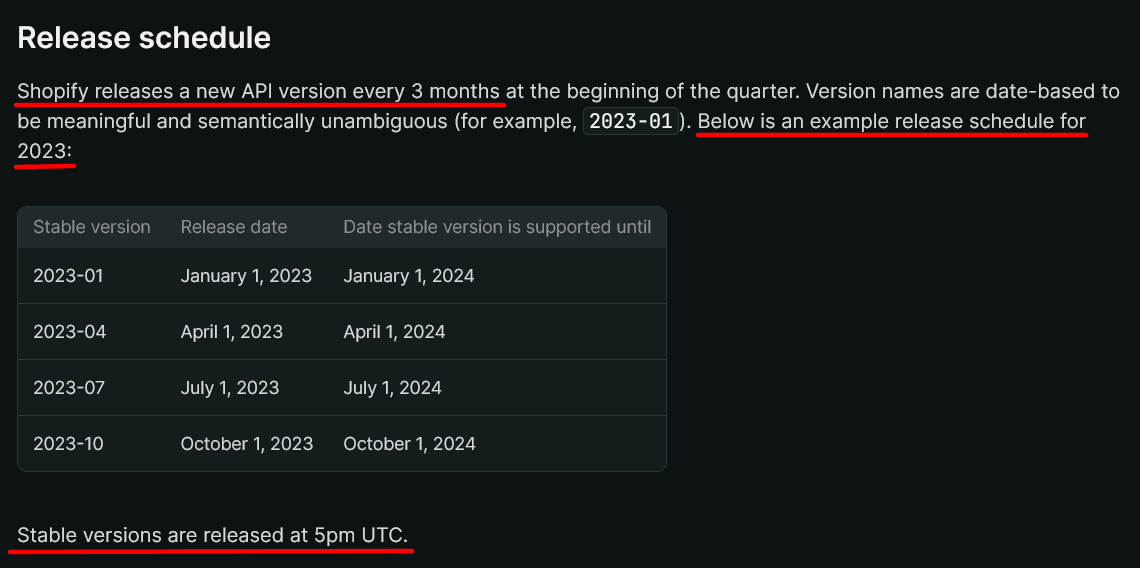
Source: Shopify
Since they also release the accompanying documentation, both the responsible employees and the users know the deadline for publishing the docs.
When you have the where, who, and when clearly established, you have your publishing plan—a crucial part of product documentation strategy.
Let’s move on to another important plan—the maintenance plan.
Create a Documentation Maintenance Plan
Listing, creating, and publishing your product documentation isn’t the ending point of your documentation strategy.
You should also have a plan on how to keep the documentation relevant.
As you already know, product documentation goes hand-in-hand with your software product—it explains the product’s features, how it works, and what its benefits are to users.
It also teaches them about every product detail.
But software products change a lot.
Your developer team undoubtedly works hard to add new features, update the interface, and do everything so that the product can stay competitive on the market.
That’s why you should have a plan for documentation maintenance.
If the product changes and the documentation stays the same, the docs will lose their purpose very quickly—they won’t be relevant or accurate.
There is a way to prevent that from happening.
For instance, if you use Archbee as your documentation platform, you can use its documentation verification feature and select a member of your team to check and verify the accuracy of the documentation periodically.
Source: Archbee on YouTube
Of course, when you make changes to your documentation, you should notify your customers about them.
After all, the documentation is here for them, and if they are up to date with the latest changes, they can use the product to its full potential.
You can do that via a changelog or release notes.
For example, Intercom has a page where they inform users about the latest or upcoming changes to their platform.
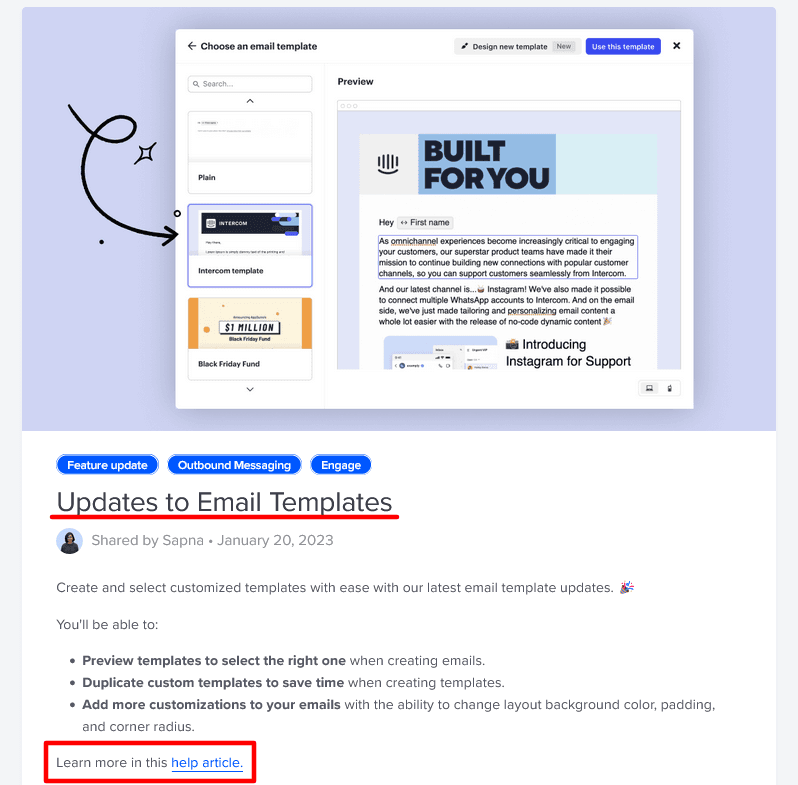
Source: Intercom
As you can see, they also include a link to the freshly updated documentation about a particular change to their product.
And when a customer follows it, they can learn more about what changed, how that impacts the product, and how to take advantage of a new or revised feature.
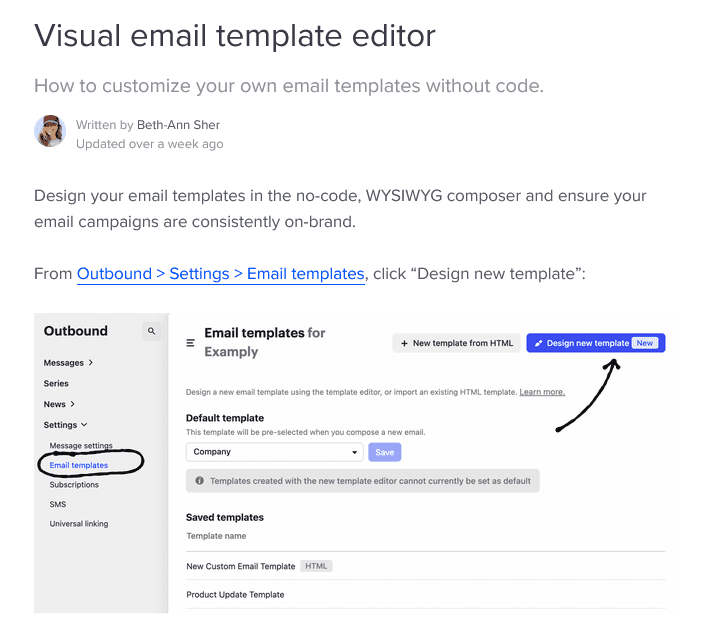
Source: Intercom
To sum up, you should have a clear plan for maintaining your documentation in your product documentation strategy.
It should determine who will check the documentation, verify its accuracy, and update it, as well as how you will announce changes to your customers.
Those are all vital questions, and the answers to them should be in your documentation strategy.
Conclusion
Creating product documentation with value and purpose is challenging, and it’s far more difficult if you don’t have a plan for that process.
Approaching product documentation strategically can bring many benefits to your business, as well as your customers.
They’ll get dependable resources of higher quality, and you’ll get more satisfied users who will keep using your product for a long time.
We hope that after reading this article, you realize the importance of having a product documentation strategy and that you’ll invest time and effort into devising one.
If you do, the results will soon be apparent.
Try Archbee's full range of features with our free 14-day trial.
Frequently Asked Questions
A documentation strategy gives you a clear plan for what to write, who it’s for, where it lives, and how it’s kept accurate over time. With a strategy, your docs become a reliable, searchable resource that helps users succeed and reduces support load. It also aligns teams on scope, tools, and workflows so you ship consistent, up‑to‑date content. The payoff: faster product adoption, higher customer satisfaction, smoother employee onboarding, and a single source of truth that scales with your product.



